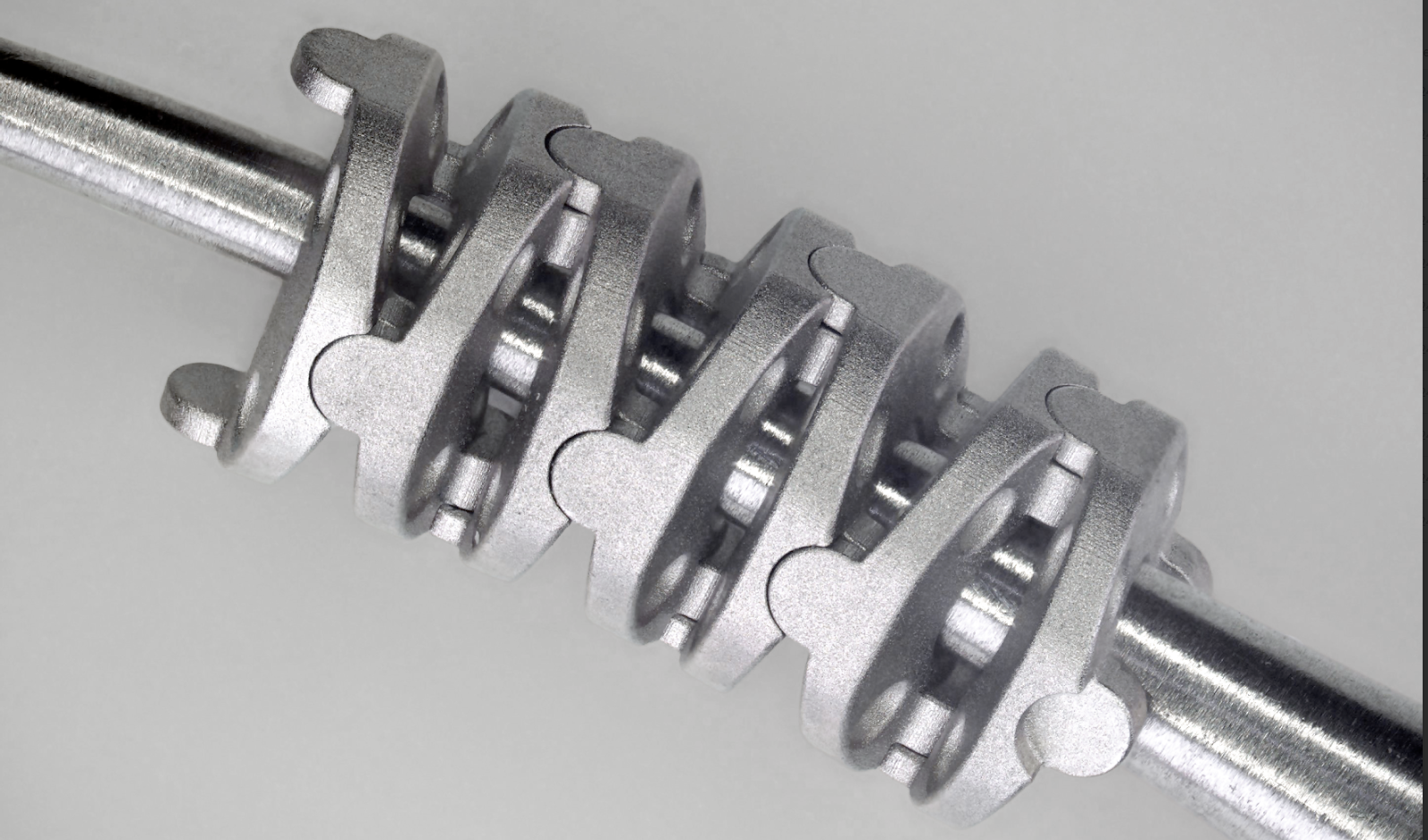Robotic surgery has received substantial attention from researchers thanks to its potential to provide greater precision, consistency, and accuracy. Surgical robots are making inroads in a wide variety of areas, from orthopedic procedures to brain surgeries. One of the most significant limitations on the development of surgical robotics has been size: Legacy manufacturing processes are often challenged when scaling down to the sizes needed for microsurgical procedures.
Enter additive metal manufacturing. Advancements in additive processes have made it possible to produce parts for robotic systems at micro scales with high precision and tight tolerances. Trio Labs’ proprietary Resin Infused Powder Lithography (RIPL) technology is revolutionizing additive metal manufacturing for MedTech and surgical robots through unsurpassed precision, design flexibility, and speed. Read on to learn more about the state of surgical robotics and how Trio Labs’ metal additive manufacturing services are helping build its future.
What Is Happening With Robotic Surgery?
The first surgery to utilize robotic technology was a cholecystectomy that took place in 1997. The market grew slowly for some time, but the growth rate has accelerated considerably over the past decade. Consider these notable insights on the recent and rapid growth of robotic surgery:
- In the decade between 2012 and 2022, the percentage of surgical procedures that used robotics to some extent rose to 22%.
- Surgical robotics was a $5.16 billion industry in the United States in 2021. This is expected to nearly quadruple to $20.98 billion by 2030. The global market could grow to more than $46 billion in that time.
- Surgical robots have become the cornerstone of treatment for prostate cancer. Currently, a significant majority of radical prostatectomies are performed robotically in the United States.
- On average, the number of robotic surgical procedures performed grows by 25% each year.
Another major breakthrough in surgical robotics occurred in the summer of 2023 when a research center in Hong Kong conducted successful tests of a robot that can perform brain surgery. The procedure, known as an endoscopic third ventriculostomy and pineal biopsy, treats tumors located deep within the brain. While a human neurosurgeon would need to open a portion of a patient’s skull to perform the procedure, which places surrounding brain tissue at risk, the robot reportedly uses tiny, flexible instruments with an AI-based navigation system.
How Is Metal Additive Manufacturing Contributing to Changes in Robotic Surgery?
One of the main advantages that robotic surgery offers over traditional surgical techniques is the ability to work at very small scales. This requires the ability to quickly iterate and manufacture durable, precise metal parts at micro scales.
Other existing manufacturing processes struggle to produce parts at small enough scales or with the required complexity. CNC machining, for example, is often limited by the size and shape of the tools used for cutting or milling. New metal additive manufacturing technologies do not rely on machining or molds to shape parts, so they can produce more complex geometries.
What Can Resin Infused Powder Lithography Offer to the Future of Robotic Surgery Devices?
In essence, RIPL is metal 3D printing with the precision of CNC. In addition to its advantages over CNC machining, RIPL overcomes certain shortcomings of other types of metal additive manufacturing. Compared to other 3D printing technologies, RIPL is uniquely capable of making parts from a wide variety of metals for miniaturized robotic surgical devices, especially as those devices become smaller and smaller.
RIPL avoids the long lead times of both MIM and CNC machining. It also provides greater design flexibility than the other methods and a smooth, native Ra32 surface finish. There is no need to reconfigure any machines to produce a new prototype. Once an updated computer model is ready, the production process can begin. This enables rapid development of new devices, seamless transition to DV/V and pilot production, and a straightforward approach to ramping up to-scale production that eliminates re-design and re-sourcing from the commercialization process.
Follow our regularly updated resources page for more information on how micromanufacturing is changing with the advent of highly precise additive technology. Meet with us to request samples, get a quote, or learn more about our capabilities. A member of the team will reach out ASAP.

